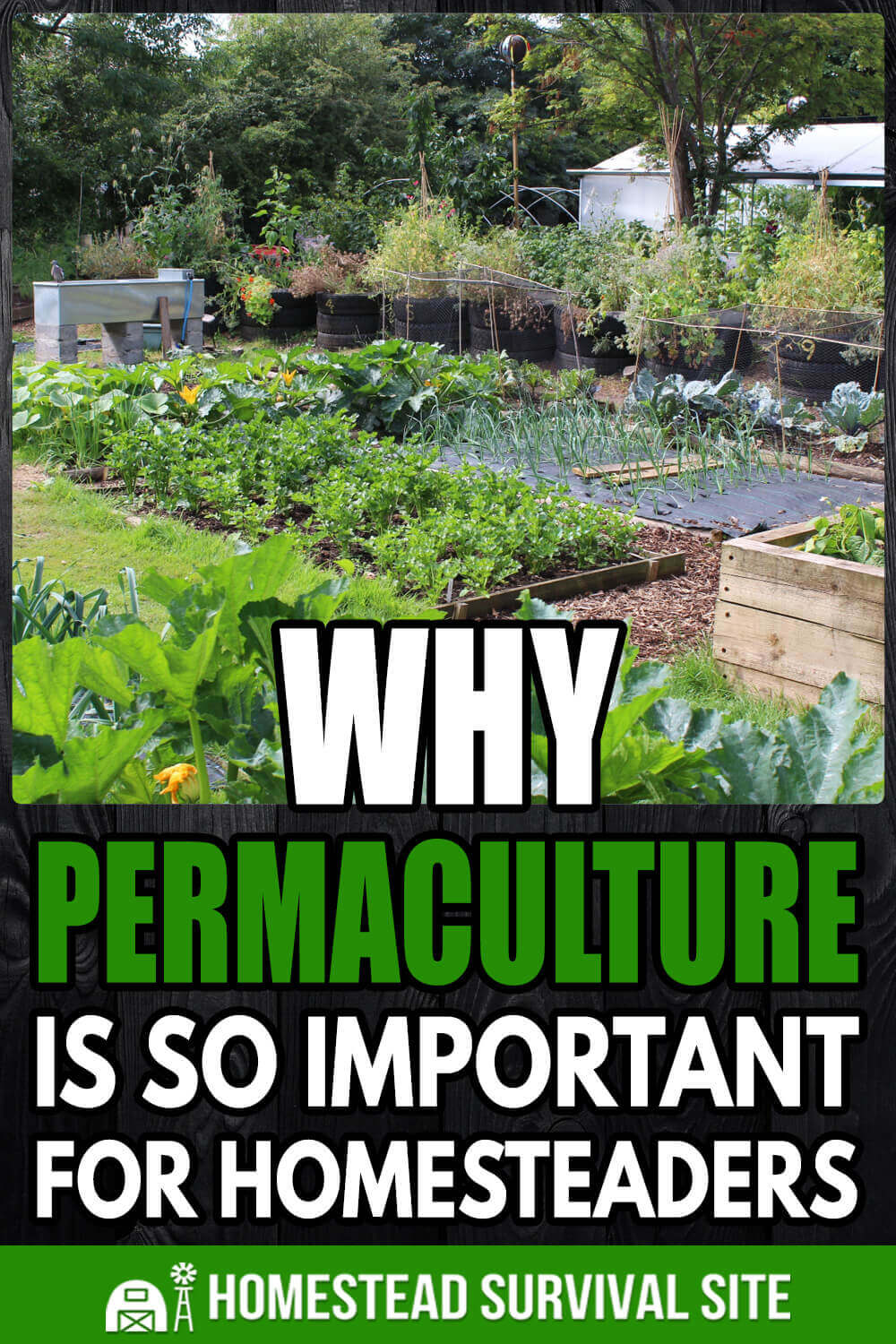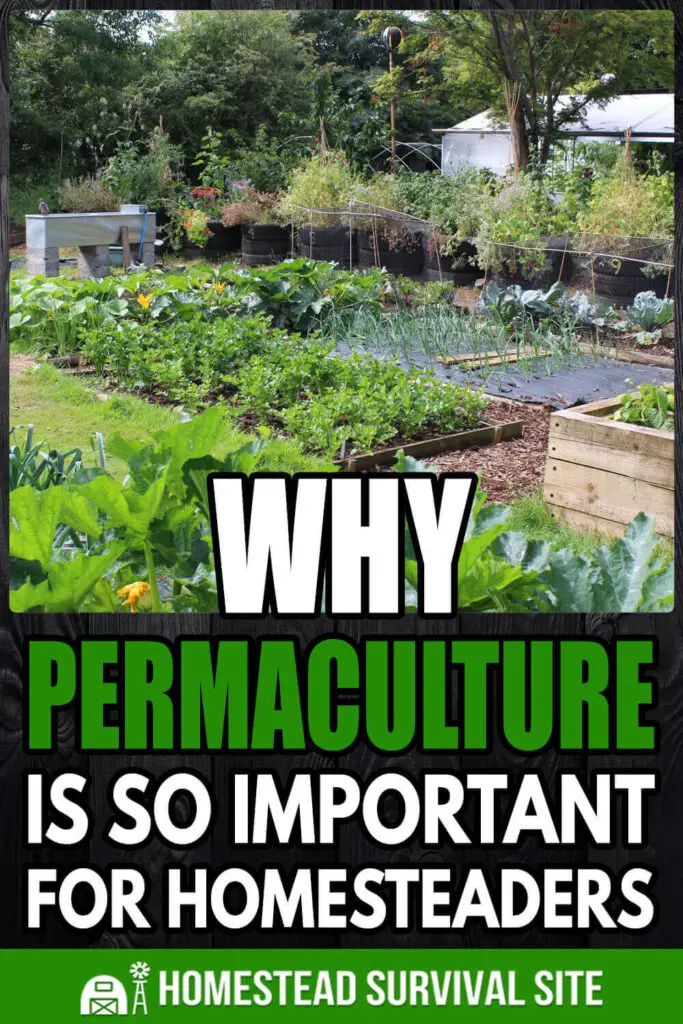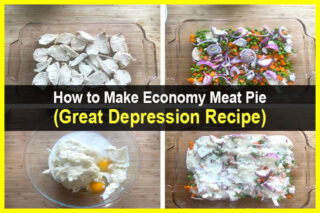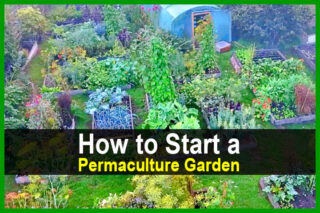Estimated reading time: 6 minutes
The back-to-the-land movement has experienced a resurgence in recent years. People are seeing the inherent problems with our modern agricultural system, and homesteading is often a logical alternative for environmentally-conscious families.
These groups now have a vast library of knowledge to draw from, making the transition a bit easier than in decades past. Recently, the design principles of permaculture have become the prime inspiration for countless homesteaders.
Want to save this post for later? Click Here to Pin It On Pinterest!
What is Permaculture?
The word permaculture is a portmanteau of two words: permanent and agriculture. Permanent refers to the regenerative, self-sustaining ideas behind permaculture. You can’t be short-sighted if you are designing and implementing a permaculture homestead—it may take years to realize your full vision, but the payoff will be well worth it as you enjoy a permanent system of food and habitat.
Agriculture is an obvious component of permaculture, as the main idea of a homestead is to cultivate plants and livestock (hopefully in a responsible, sustainable manner).
A permaculturist ensures decades of production and success for their property. Contrary to this idea, ‘big agriculture’ only worries about this year’s profits (often resulting in the destruction of land). By taking only what you need from the system, the plants, animals, and land have a chance to sustain and regenerate themselves. With just a little bit of human input, a properly-designed permaculture system can practically take care of itself.
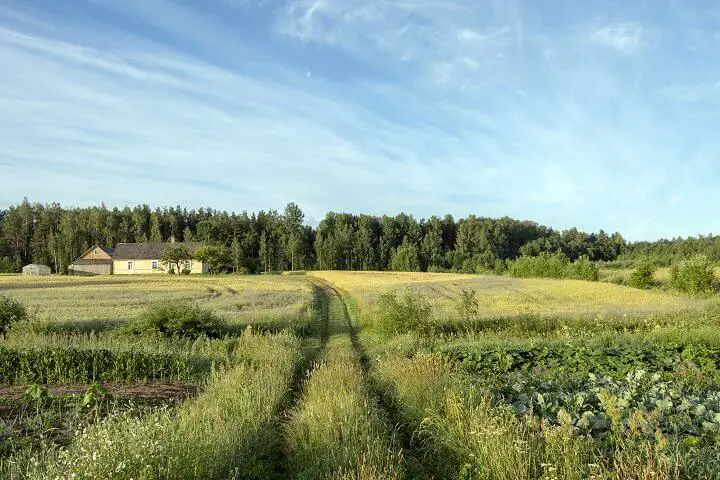
Why Should You Embrace Permaculture?
Permaculture provides a set of ethical and practical guidelines to prepare your homestead for long-term success. The principles work by replicating the instinctive give-and-take of nature, benefiting your family, plants, and animals, as well as the surrounding ecosystem. Although you will need to put in time and labor upfront, a well-designed permaculture homestead can actually decrease the amount of human effort required to live sustainably.
For example, buildings can be constructed to receive natural heating and cooling. Using sustainable building techniques, the sun can passively heat a home in the winter (to a certain extent), while the wind can cool it down in the summer. By allowing your ecosystem to interact in natural ways like this, we can put less stress on ourselves and our environment.
Food forests are another common touchstone of permaculture-inspired homesteads. By establishing a polyculture of trees, plants, and fungi that live in harmony, homesteaders can have a reliable source of sustenance that regenerates itself year after year.
Permaculture Principles for Homesteaders
Bill Mollison is often considered the founder and father of permaculture. His landmark book, Permaculture: A Designer’s Manual, was released in 1988 and can be considered a ‘sacred text’ for the permaculture movement. It is often used as a curriculum for permaculture design courses, and it sits on the bookshelves of homesteaders around the world. In the book, Mollison sets forth 12 design principles for homesteaders to utilize.
While all of the principles hold equal importance, there are a few that really exemplify the ideas and ethos behind permaculture: integrate rather than segregate, catch and store energy, and obtain a yield.
Integration vs. Segregation
Modern agriculture practices always lean towards segregation. Crops are planted in a monoculture, which leads to soil deficiencies, pest problems, and other issues. Livestock are kept in cramped pens, segregated from each other and deprived of basic necessities like grazing pastures, fresh air, and sunlight. The results of these techniques are low-quality food, unnecessary animal suffering, and the degradation of our farmland.
Permaculture emphasizes the idea of integration. Instead of monoculture planting, a permaculture garden focuses on diversity. Companion planting is a common technique in which a variety of vegetables, herbs, and other plants grow in sync. For instance, planting onions on the edge of garden beds can deter rodents and insects from munching on your leafy greens. This is a natural substitute for pesticides and traps.
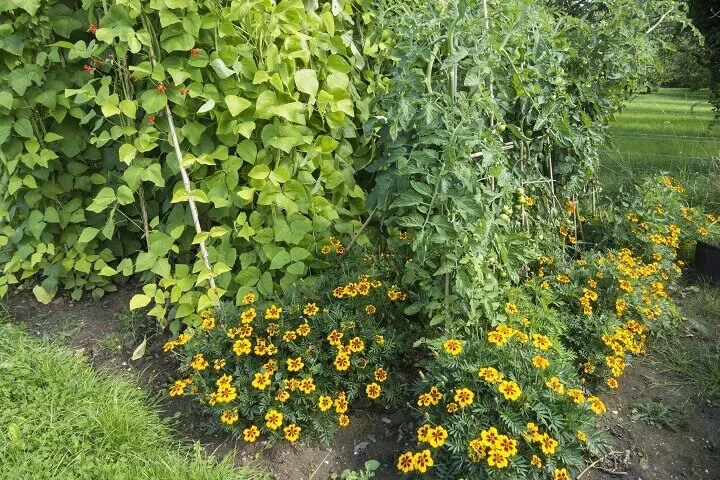
With permaculture, livestock are often kept around the land and allowed to express their innate behaviors. Chickens love to scratch the soil and eat bugs, so allowing them to roam around your garden can be a mutually beneficial relationship.
Instead of using a tractor to plow fields—which requires gas, oil, and maintenance (and puts out pollution)—another creature can be used in a positive manner: pigs. Our pot-bellied friends enjoy digging and tearing up the ground, so they can be moved around your land as you need the soil worked.
By allowing plants and animals to work together, beautiful things can happen on your property. Production is increased while human effort is reduced, and you can rest easy knowing that your livestock are allowed to indulge in their natural behaviors.
Catch and Store Energy
Energy comes exclusively from the sun, so this design principle focuses on harnessing and utilizing the sun’s energy in efficient ways.
This idea shows up all over nature. Trees harvest sunlight during the summer and store it as sugar for over-wintering. Squirrels collect nuts (which grow using the sun’s energy) in order to hide them away for the winter. Humans can perform similar actions: we can collect water during the rainy season and store it for drier times, or capture the sunlight using solar panels and power our homes during a dark winter.
Obtain a Yield
Obtaining a yield from your land seems like an obvious principle, but it’s easier said than done. Most homesteaders enter the lifestyle with the hope of producing most or all of their food. This is one form of yield, but permaculture asks us to dig deeper as to what a ‘yield’ can really be.
Homesteads often revolve around family and community. This connection with others can be considered a yield (and an important one, at that). Not only will your trees produce edible foods, but they also provide oxygen, shade, and a habitat for animals. The roof of your home provides a cozy shelter, but can also be set up to capture rainwater. As long as you can find yields like these on your homestead, you are on the right track.
Our modern culture places a strong emphasis on consumption. By moving back to nature and using permaculture principles, we can produce more than we consume and live a more balanced life.
Like this post? Don't Forget to Pin It On Pinterest!

